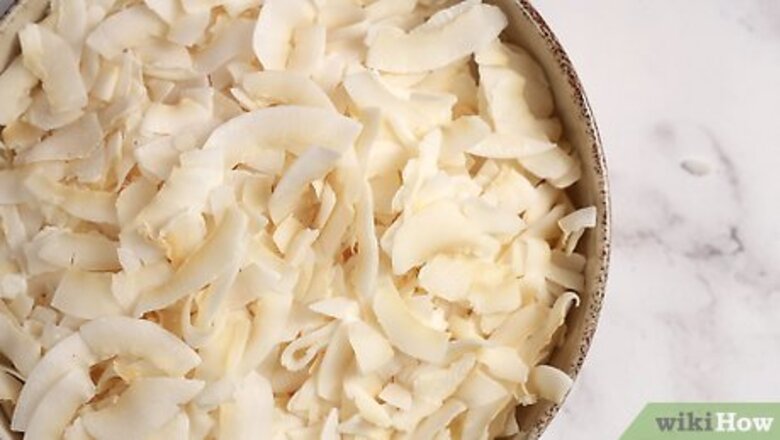
views
Coconut Milk from Shredded Coconut
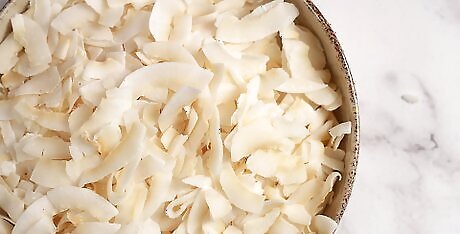
Buy a bag of shredded coconut. Look for the unsweetened kind in the grocery store aisle near the baking supplies. If you can't find shredded coconut, shaved coconut also works quite well.
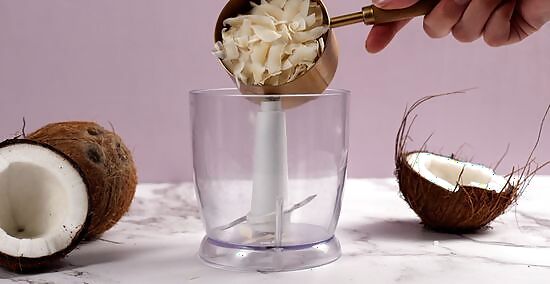
Measure out the shredded coconut. Every cup of coconut will end up translating into two cups of milk. Measure out the coconut into a blender or high-powered food processor.
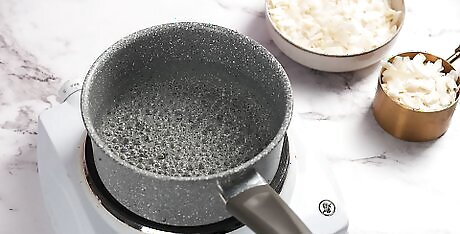
Boil water. You'll need two cups of water for every cup of coconut you have. Measure out the correct number of cups into a pot. Place the pot on a burner and turn the heat to high. Let the water come to a full boil.
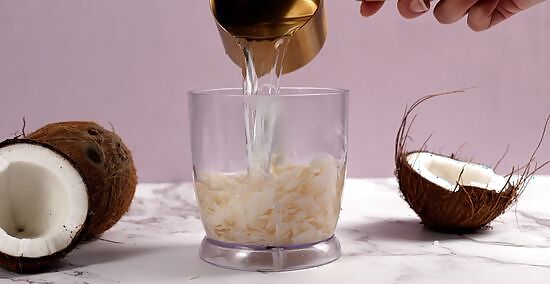
Pour the water over the coconut. Pour it directly into the blender. If your blender is small, you may need to do this in batches. Use a spoon to stir the mixture well.
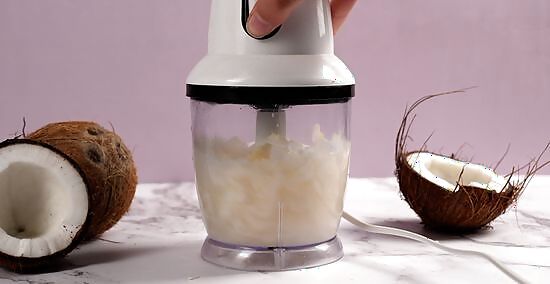
Blend the coconut with the water. Place the lid on the blender and blend the coconut and water until the mixture is as smooth as possible. Be sure to hold the lid of the blender tightly in place with one hand, since blending heated substances can cause the lid to fly off unexpectedly.
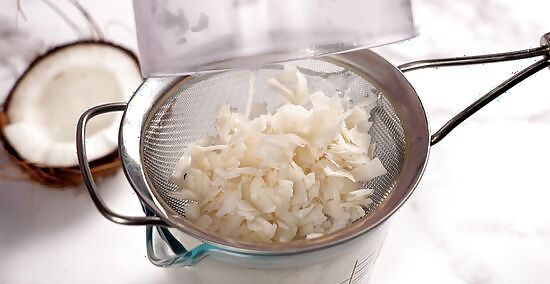
Strain the coconut solids. Place a piece of cheesecloth or a fine-mesh strainer over a large bowl. Carefully pour the coconut mixture through the cloth, straining out the solid pieces. The liquid that is left in the bowl is fresh coconut milk. If you're using cheesecloth, pick it up and squeeze out the extra milk before discarding the solid coconut.
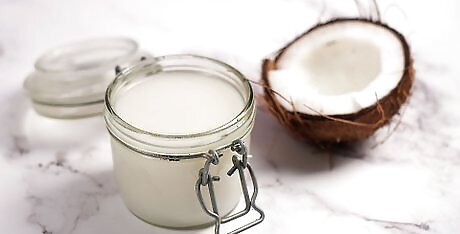
Store the coconut milk. Pour the milk into a jar and store it in the refrigerator with a lid. The fat in the milk will naturally rise to the top of the jar. When you're ready to use the milk, shake it first so that the fat mixes back in with the water.
Coconut Milk from Desiccated Coconut
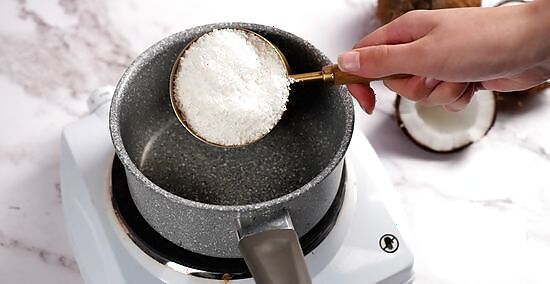
Combine equal quantities of the coconut and milk or water in a saucepan.[[Image:Coconut Milk Step 1.jpg|center] Not everyone agrees with using dairy or other plant milk to make coconut milk from; decide for yourself what you prefer. Water is just fine, as is using a plant milk.
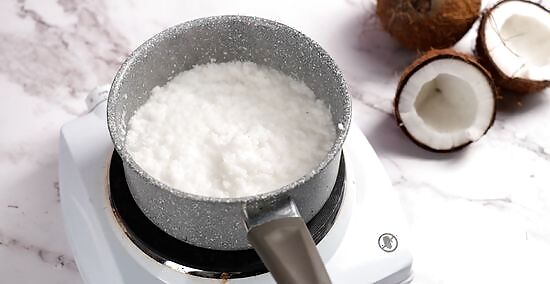
Simmer gently for 2-4 minutes on low heat. Stir frequently. Do not allow to boil.
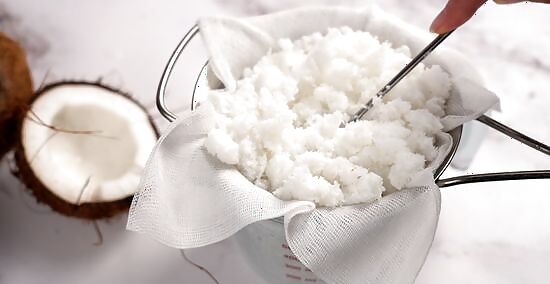
Strain through a sieve that is lined with muslin or cheesecloth. Pour the liquid into a bowl.
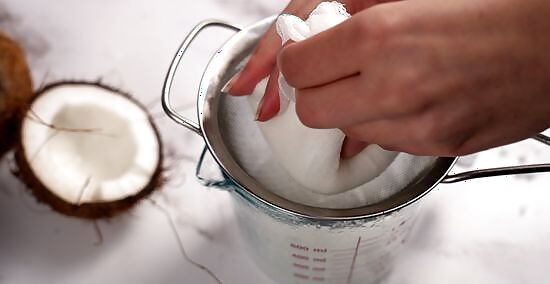
Bundle up the coconut in the cheesecloth. Twist out as much additional liquid as possible into the strained liquid in the bowl before discarding the coconut. Let the mixture cool before squeezing the cheesecloth so you don't scald your hands.
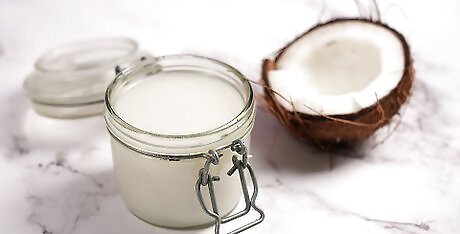
Done. Use the coconut milk in your recipe as required or as part of a drink.
Coconut Milk from a Fresh Coconut
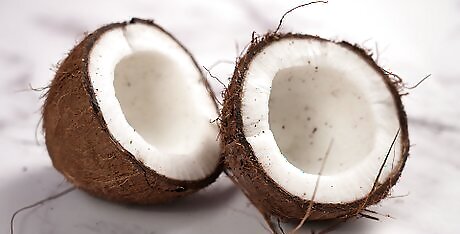
Open the coconut. Set a fresh, young coconut on a hard, flat surface in your kitchen. Hold it in place with one hand, and use a butcher knife to make cuts in a circular shape around its eye. The easiest way to do this is to strike the coconut, as you would with a machete, in the same place until a deep enough cut is made. Continue to do this until you've cut a circular lid that can be lifted away from the coconut. Use a very sharp knife to do this job. A blunt knife could slip and cut your hand. Another method for opening a coconut is to wrap the coconut in a kitchen towel and set it on a hard surface. Use a rolling pin or a hammer to strike the coconut in the middle, so that it cracks in half. If you use this method, drill a hole in the coconut first, drain out the coconut water, and set it aside.
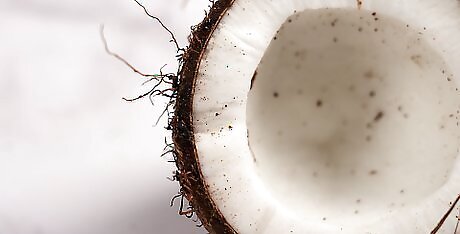
Make sure the coconut is fresh. Smell the coconut and inspect the meat. If the coconut smells good and the meat looks moist and white, it's fine to use. Discard the coconut if it smells off or if the meat is dried out or discolored.
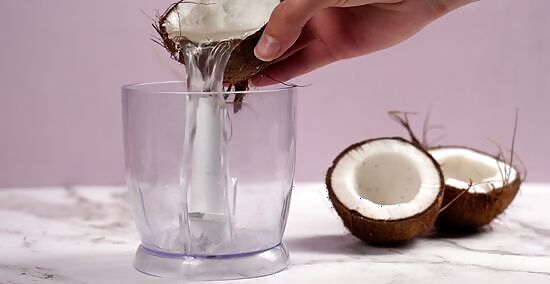
Reserve the coconut water. Pour it straight from the coconut into a blender.
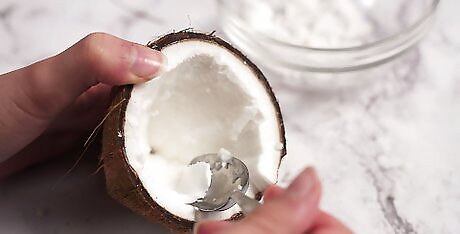
Scoop out the meat. Use a spoon to scoop the meat from the inside of the coconut. Try to get every last bit of white meat from the walls of the coconut, and don't forget to scrape it off of the lid, too. The meat should have a texture similar to a dense melon and easily curl against the spoon. Place the scraped meat into the blender.
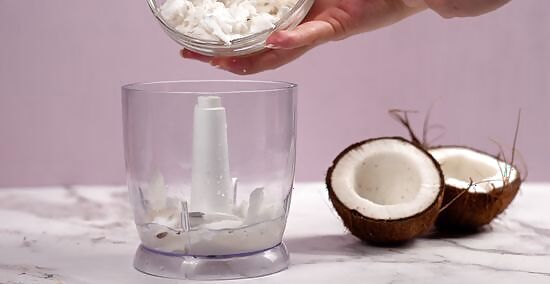
Blend the coconut water and meat. Put a lid on the blender and pulse it on high until the coconut water and meat are fully combined and smooth. At this point you may either strain the solids from the coconut milk or leave them as part of the mixture. Since fresh coconut meat is soft, many enjoy it in a glass of coconut milk, the way some like orange juice with pulp mixed in.
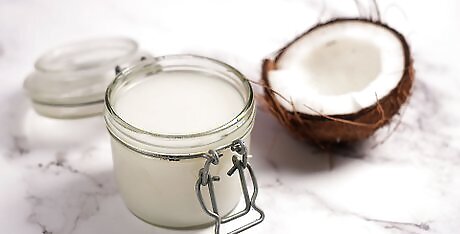
Store the coconut milk. Pour the fresh coconut milk into a jar. Put a lid on the jar and keep the milk in the refrigerator until you're ready to use it.
Coconut Milk from Freshly Grated Coconut
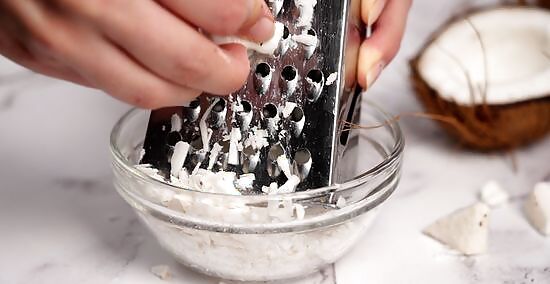
Grate the coconut flesh into a bowl.
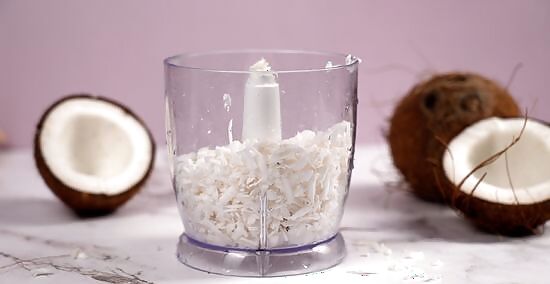
Transfer the grated coconut flesh into a blender.
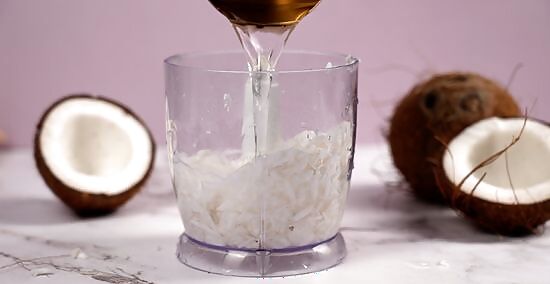
Add 1 1/4 cups of hot water.
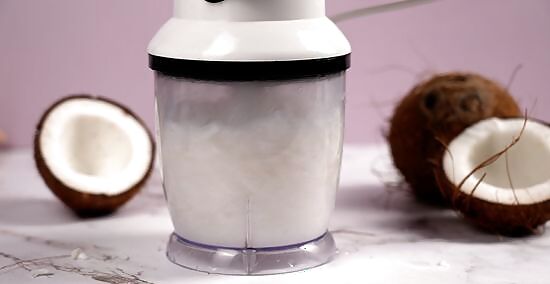
Pulse to blend. Only pulse for a few seconds. It's wise to push down on the lid with a piled-up tea towel while pulsing, to prevent the lid from blasting off due to the heat in the container.
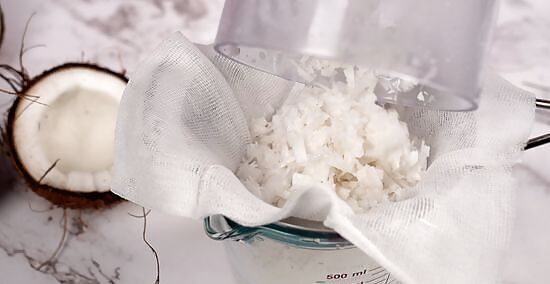
Remove the coconut pieces. Push the contents through a muslin- or cheesecloth-lined sieve.
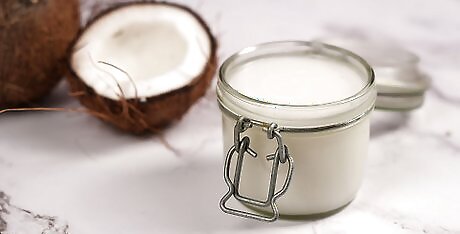
Pour the thick milk into a glass jar for storage in the refrigerator. Or, use straight away in your dish or drink.




















Comments
0 comment